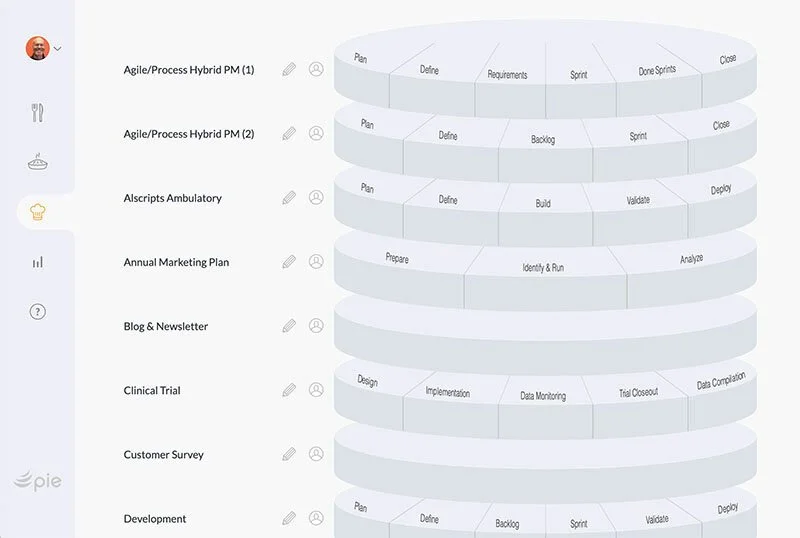Does your boss trust you?
In the world of project management, the term "boss" is nebulous... That's because many of us work in teams with cross-reporting functions like a matrix.
Our project leader isn't necessarily our "manager" in the truest sense of the term and our own department lead may not even be part of our project.
This mess of liaisons and working relationships makes it difficult to navigate and apply traditional organizational development concepts. But there is one underlying element that all good project teams must have if they want to be successful: TRUST. It goes up, down, sideways, and it's essential.
Yet I don't know about you, but I've witnessed limited (if any) trust amongst team members, project managers, stakeholders, and customers.
If we want to expand a greater amount of trust with all stakeholders and executives in a project, there are a few things that need to change. Here they are:
Performance evaluated on value creation
There's something funny that happens in project management where a project team has objectives that don't necessarily match stakeholder and customer's objectives. As a project manager, your objectives could be about being on time, on scope, on budget, and a half-dozen other project constraints.
Stakeholder and project customer goals are about what value they'll gain upon completion of a project, rather than how well the project was executed. Stakeholders want their customer to be satisfied and the customer wants the final result of the project to improve something in their business.
Your boss may not trust you if they hold that grandiose responsibility on their shoulders. Because you have nothing to lose (relative to the stakeholder or customer) if the end result isn't satisfactory to the customer, they don't trust you to make the right decisions.
If you can't bake performance into the evaluation process, there are ways in which you can show your boss that you care about those things too and keep them top of mind. Adjusting the project's success constraints to better fit value creation accordingly would be one way to do this.
Don't under-promise: over-deliver
When it comes to project management, under-promising is simply not an option. Customers have expectations and bosses know that it's everyone's job to meet those expectations.
Yet, one reason your boss may not trust you is that achieving the customer's expectation is nobody's priority but their own.
When everyone on the team constantly strives towards over-delivering on value and benefits, then your boss doesn't have to carry that burden themselves and will trust you to do the work and make decisions after they see value creation and exceeding expectations.
Use standards, be flexible, and adapt to build trust
No two projects are the same, so why do we repeat the same processes for every project? Your boss may not trust you because blindly applying frameworks to any project doesn't generate business value for your company or your client.
There can be many projects that benefit from the same process. For example, think of a systems integration firm that implements EHR systems at hospitals. They leverage the same process each time for standardization, efficiency, and “trust”.
By trust, I mean the executives are building confidence that the field consultants are indeed following proven and constantly improving best practices.
There are three things to look at when the executive is not trusting the project manager:
The boss doesn’t trust you because you may be using the exact same methodology or framework for all different types of projects or different types of end customers.
For example, if a healthcare systems integrator implements the same process for Ambulatory as for Intensive Care, it will fail as a one-size-fits-all inflexible framework. Understand the needs and then turn your process framework into a new version by tweaking its recipe ingredients.
Then add it as option two. Keep doing this and you will have more options for future project customers.The boss doesn’t trust you because your homework was limited to finding the best-fit process. You may pick a framework for the customer project that ends up not being the right fit for their business model.
Even if you have a refrigerator of frameworks, be careful to pick the right flavor for the customer’s tastes and appetite. Make enough time before kicking off the project in the planning phase to pick the right methodology.The boss doesn’t trust you because your frameworks are out of whack with the customer’s business model and value needs. Are you experienced enough to carve one of the existing processes and then mix up better ingredients to make it delicious? Are you spending time researching and finding a framework outside of your project kitchen that's more fitting for your customer’s project?
It's not easy, so again, make the time up front. Show your steering committee how you have pulled together the best recipe for the new project and trust will rise!
In Dr. Harold Kerzner's book Project Management 2.0, he expresses that companies still in the old PM 1.0 mindset don't trust their project managers. Those progressing to the PM 2.0 philosophy are now trusting project managers, and for good reason.
Dr. Kerzner writes, "Customers want the contractor to use a methodology that is flexible enough such that it can be adapted to the customer’s business model.
If the methodology does not possess this flexibility, then it may not be possible to maximize the value that the customer expects.
PM 2.0 methodologies remove the handcuffs from the project managers and allow them the flexibility needed to select those forms, guidelines, templates and checklists that are directly applicable to the customer’s business model and needs."
Adapt your methodology library to be robust and flexible and your boss will start to trust you. It's a lot easier to do than you think. One quick-win step is to include in each project framework a few tasks in the Plan phase asking if this process is the right process. But, if you check off that task, you are now accountable.
The following is a Pie model of a library displaying project “recipes” ready to be used as is or customized to adapt to a particular project need.
Anticipate future needs and be proactive
When you are able to see the bigger picture and identify how your project fits into the customer's business model, you'll be able to better anticipate challenges and needs.
Your boss doesn't trust you if you don't have that bird's eye view that could allow you to make better customer-driven decisions. You have a set of skills and knowledge that are critical to project success, yet these skills aren't always used efficiently.
Your boss will trust you when you start seeing how the project whole is greater than the sum of its parts.
Do your homework and then get involved proactively in steering committee meetings. Show the executives what you know about your customer's business model and how to choose the right framework and then see it through execution. Sell your story!
Learn and improve continuously
There are no secrets to achieving success, but one thing is for sure: mistakes and failures are part of that process. Your smart boss may still trust you if you have made mistakes in the past. But, your boss won't trust you if you failed to learn from those mistakes.
The most successful people are those who also have lived through the most failures, yet persevered, learned and improved their way of doing things.
Make sure you bake in those lessons-learned into your process, you will show that there was value, rather than loss in any unforeseen issue. Focus on your project customer's business model.
Keep researching for better frameworks. Include action steps in each project that asks if you have the right process and then asks for lessons learned at the end of each project phase. Then turn those lessons learned into improved framework steps for the next like-project engagement.
Remember, trust isn't necessarily built on winning. Rather, trust is an accumulation of several building blocks, that together, form a structure that stands tall and stable.
Written by Isabelle Blondin
Photo by Yuvraj Singh


